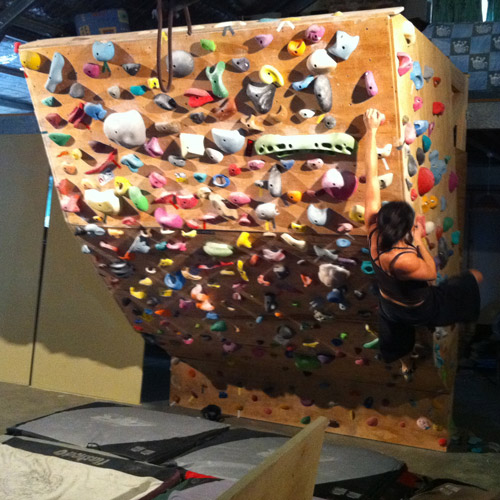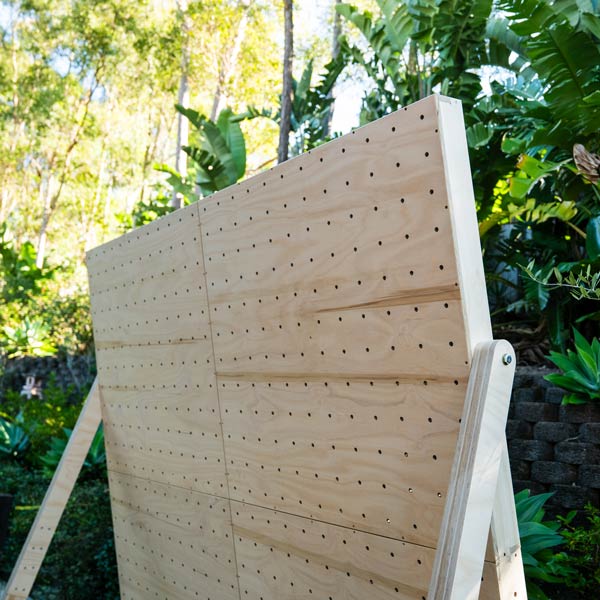Grid vs. Random T-Nut Installation
When you’re building a climbing wall, deciding how to install your T-nuts is a bit like choosing the best path up a tricky route: you’ve got options, and each has its own set of pros and cons. The big question is whether to go for a neat, orderly grid pattern or mix it up with a more random, go-with-the-flow approach. Let’s break it down.
Grid Pattern
Pros:
-
Even Spread:
- Imagine your climbing wall as a canvas, and the T-nuts are your paint. A grid pattern gives you a well-balanced spread, like a perfectly frosted cake, with T-nuts evenly distributed so you’ve got plenty of options for hold placements, no matter what type of route you want to set.
-
Flexibility:
- Think of a grid as a blank slate—it’s versatile. You can move holds around like furniture in a living room, easily refreshing the space with new routes without breaking a sweat.
-
Easy Peasy Planning:
- A grid is like a connect-the-dots puzzle—simple and straightforward. You can map out where every T-nut goes with the precision of a Swiss watch, which makes installation smooth sailing.
-
Predictable Placement:
- With everything lined up, it’s easy to know where holds will go, which is great for setting those perfect sequences that make a climber's day—or week!
Cons:
-
A Bit Pricey:
- The downside? Covering your wall in a grid can feel a bit like overpacking for a weekend trip—you’re using more T-nuts than you might need. This can bump up the cost slightly, though it’s usually not a deal-breaker.
-
Visual Uniformity:
- A grid can sometimes look a bit too uniform, like a perfectly manicured lawn—it’s nice, but maybe a little too neat for some tastes.
-
Unused Spots:
- You might end up with T-nuts in places you’ll never use, kind of like buying a fancy kitchen gadget that ends up gathering dust in the cupboard.
Random Pattern

Pros:
-
Cost-Effective:
- A random pattern is like a budget-friendly road trip—you’re only spending where it counts. You place T-nuts where you really need them, which can save you some cash.
-
Natural Look:
- If you want your wall to look more like the great outdoors, a random pattern can help. It’s like adding a bit of wild, untamed nature to your climbing experience.
-
Tailored Setup:
- A random pattern lets you get creative and place T-nuts where you know you’ll want them, like planning the perfect stops on your route. It’s all about customizing your climb.
Cons:
-
Limited Flexibility:
- The downside? You’re locking in your options early. If you decide later you want to change things up, it might feel like trying to reroute your trip mid-journey—you might need to drill more holes.
-
Tricky Planning:
- A random pattern requires more thought upfront. It’s like picking the best trail at the start of a hike—you’ve got to think ahead, and it’s not always easy to know where you’ll want to go.
-
Risk of Gaps:
- You could end up with some blank spots, like missing a key ingredient in a recipe, which might limit where you can place holds later on.
Cost Comparison
- Grid Pattern: This approach can be a bit more expensive, like springing for first-class seats. But you’re paying for the comfort of knowing you’ve got options galore.
- Random Pattern: More like flying economy—you’re only paying for what you need, which can be easier on the wallet, but you might sacrifice a bit of flexibility.
Ease of Installation
- Grid Pattern: Installing a grid is like following a recipe—once you get the hang of it, it’s pretty straightforward and predictable.
- Random Pattern: Going random is more like freestyling in the kitchen. It takes a bit more thought and creativity, which can slow you down.
Speed of Installation
- Grid Pattern: It’s faster to install because you’re working with a pattern, like putting together a jigsaw puzzle with a clear picture on the box.
- Random Pattern: Slower, because you’re making decisions on the fly, like painting a mural with no sketch to guide you.
Conclusion
Choosing between a grid pattern and a random pattern for your climbing wall’s T-nuts is a bit like deciding whether to take the scenic route or the highway. A grid gives you flexibility and ease of use, perfect for those who like to keep their options open. On the other hand, a random pattern can save you some cash and give your wall a more natural look, but it requires more planning and might limit your future options.
It all comes down to what kind of climbing experience you want to create—and how much time and money you’re willing to spend to get there.







